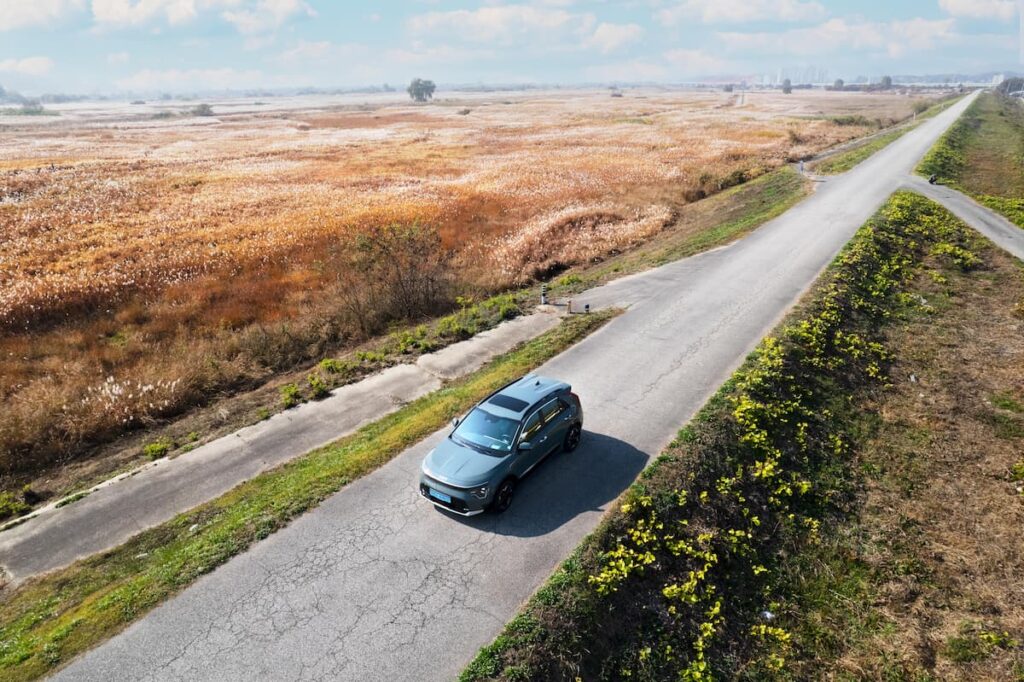The latest cars include different driving modes — such as Car Eco (or Eco Mode), Normal, and Sport. Let’s focus on the first one, also known as eco-driving.
Find out what it’s for, why you should use it, and learn about some actions you can adopt to preserve the planet (and your wallet too).

Eco-driving? What is that?
Eco-driving helps reduce fuel consumption, gases emission, and also the number of accidents on the road — as the speed’s lower, driving gets more defensive.
The ecological footprint reduction also happens thanks to the manufacturer’s efforts when building cars. Nowadays, many brands have eco-friendly vehicles in their fleet.
But drivers must also contribute — by using more eco-friendly driving styles. When you activate the eco mode, carbon dioxide emissions reduce.
But we don’t stop there, as you can do (much) more when it comes to eco-driving.
Eco-driving: 10 actions you should take
Driving in eco mode saves the planet and reduces the number of accidents on the road. And there’s a lot you can do with every day.
1. Up-to-date vehicle maintenance
An inspected vehicle is more economical and environmentally friendly (the same happens with solar and hydrogen-powered cars).
2. Anticipate braking
Think about your driving and anticipate some situations (at least most of them).
Drive slowly and carefully. That way, you avoid sudden braking, ensure the safety of everyone on the road, and adopt an eco-mode that goes beyond a car mode.
3. Ensure the proper tire pressure
Use the tire pressure recommended by your vehicle’s brand, as this is the only way that protects them. In addition, underinflated tires consume more fuel (which is increasingly expensive).
4. Less use of the accelerator
When driving downhill, you don’t need to use the accelerator.
In fact, if you do, you are unnecessarily consuming fuel. Let it off and leave the car engaged in one of the gears. By doing this, you control the car better.
5. Don’t use the air conditioning all the time
Sometimes you don’t need air conditioning (and don’t even know it’s on). And the truth is: its improper use also increases fuel consumption.

6. Avoid carrying things on the roof
Any loads on the roof of the car create resistance while driving. This, in turn, increases fuel consumption.
7. Unnecessary cargo
Don’t fill the trunk with what you don’t need. Remember, eco-driving is much more than a mode you activate in your vehicle… It’s about a way of living.
8. Choose the shortest route
Anticipate your route. Check the traffic before you start the car. This way, you avoid traffic jams and even the longest routes.
9. Turn off the engine whenever you stop
Are you stuck in traffic? If so, use your car’s start and stop, for example. If you don’t have that system, then turn off the engine.
10. Walk more
Is the route short? Then, don’t use the car. By doing this, you save fuel and improve your physical condition. That’s what we call a proper eco mode.
Eco mode activated. Is the driving different?
Yes, of course. Eco mode optimizes your car’s fuel consumption — which primarily impacts driving.
When you press the pedal, as in other driving modes, you will notice that acceleration is more difficult — because the engine gets less fuel, so acceleration is slower.
In cars with automatic transmission, the shift to higher gears happens at low revs — to reach the most economical revs faster.
Therefore, it is best to use eco-driving. Your car, wallet and the environment will thank you for this simple but high-impact action.

